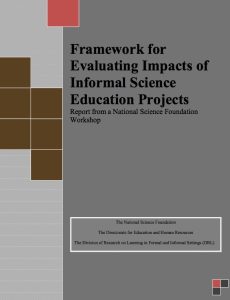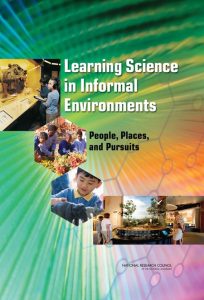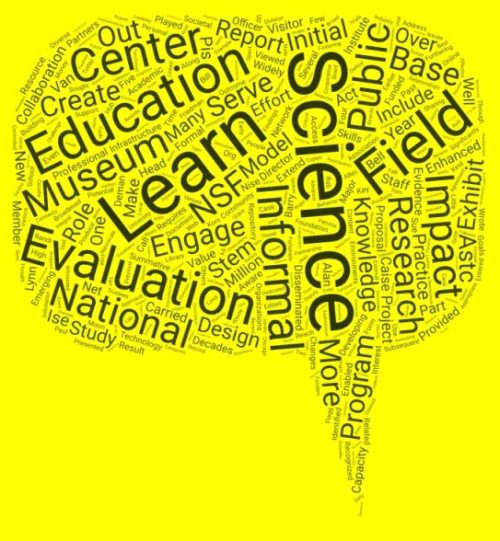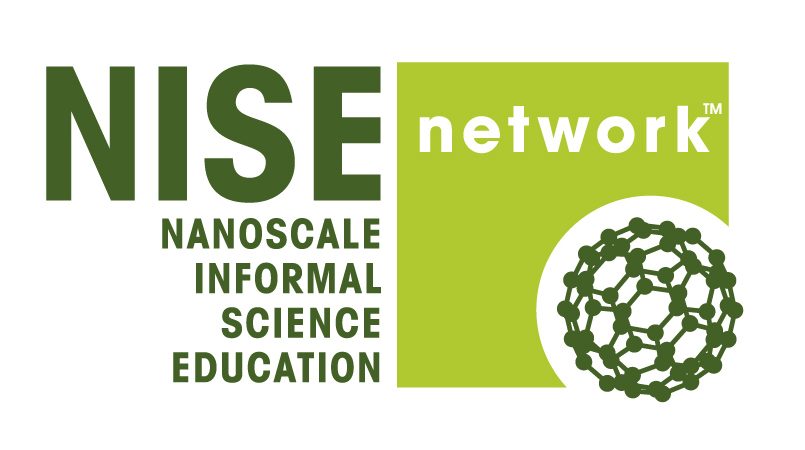In conjunction with its 50th anniversary, the Association of Science and Technology Centers (ASTC) issued a request for reflections on the biggest changes in the field and those we have helped foster. This post is a response to that call.
Over the past four decades, I have witnessed major changes in the science center field that have significantly enhanced its capacity to engage the public in STEM learning. I have been fortunate to serve in roles that enabled me to make several contributions.
Evaluation
When I entered the field, few science centers carried out any kind of evaluation. Many museum directors thought that little could be learned beyond their personal observations and that formal evaluations were a waste of time and money. Today, the value of formative and summative evaluation is well established and widely recognized; the Visitor Studies Association, for example, has more than 200 professional members, and many museums have their own dedicated evaluation staff.
The National Science Foundation has played a key role in institutionalizing evaluation by requiring and funding it as an integral component of its awards. While serving at NSF as program officer, head of Informal Science Education (ISE), and then deputy/acting division director, I was able to extend this effort. In 2006, we funded informalscience.org as the web repository for making summative evaluations accessible, enabling others to learn from previous projects (building on an earlier grant initiated by Barry Van Deman.)

In 2008, I initiated the effort to produce the Framework for Evaluating Impacts of Informal Science Education Projects. We prepared this report in response to the threat to ISE funding created by the Academic Competitiveness Council, formed as part of the Deficit Reduction Act of 2005, which sought to limit rigorous evaluation to randomized controlled trials. Edited by Alan Friedman, the report identified broad categories of project impact (awareness, knowledge, or understanding; engagement or interest; attitude; behavior; skills; other) and presented evaluation designs most appropriate to assessing various forms of informal learning. Contributors included: Sue Allen, Patricia Campbell, Lynn Dierking, Barbara Flagg, Cecelia Garabay, Randi Korn, and Gary Silverstein. This report became a widely disseminated resource for evaluating and enhancing the impact of public engagement in science centers and other informal venues.
External Credibility
Early on, many funders, academics, and some trustees viewed the science center experience as enjoyable, but were skeptical that visitors were actually engaged in learning. That was the case even as the research and evaluation knowledge base began to grow. Having spent a year at the National Academy of Sciences, I was aware of their exacting study process and the high regard in which its reports were consequently viewed. While at NSF, I encouraged then head of its Board on Science Education, Jean Moon, to submit a proposal for a workshop on informal science learning. It was funded, as well as a subsequent proposal for a synthesis study of the underlying research, which I also oversaw.

The resulting report, Learning Science in Informal Environments, documented abundant evidence for affective and cognitive learning. Significantly, it broadened the strands of formal science learning to encompass the strengths of science centers: developing interest and motivation, as well as an identity as a science learner. This report provided critical validation of the impact of the field. It also identified directions for future research, furthering partnerships with academic institutions. The companion volume Surrounded by Science showed practitioners how best to make use of the evidence-based findings to deepen their impact on STEM learning.
National Collaboration
Communicating recent developments in science and technology serves an important societal role but has always been a challenge for science centers. It requires considerable effort to determine the appropriate content for an emerging science and to design engaging exhibits and programs on an entirely new topic. That challenge is multiplied by the tendency of science centers to “reinvent the wheel,” carrying out their own content research and exhibit design.
Addressing these concerns was among my goals at NSF as I wrote the text for a Nanoscale Science and Engineering Education funding solicitation that called for a network that would facilitate two forms of collaboration. One was partnering science centers with nanoscience and technology researchers, creating a model that potentially could be extended to other emerging fields. The second was partnering among complementary science centers to create a national infrastructure for sharing knowledge, research, and products. (This approach was based in part on a “hub and spokes” model previously conceived by Barry Van Deman and Bill Frascella.) The outcome was an unprecedented five year, $20 million Cooperative Agreement forming the Nanoscale Informal Science Education Network, for which I served as initial program officer. It was formed through partnership of the Museum of Science, Exploratorium, and Science Museum of Minnesota; PIs were Larry Bell, Rob Semper, Tom Rockwell, Paul Martin, and Carol Lynn Alpert.
NISE Net’s collaborative model has transformed the field, exceeding my most ambitious expectations. It has linked more than 2,700 educators, researchers, and other professionals at 600 science centers and museums, universities, libraries, schools, and community organizations to engage the public, forming local, regional, and national relationships. Its products encompass exhibits, programs, and media that reached more than 11 million people over its 12 years, including a signature national (and international) event, NanoDays. Its online library includes over 500 freely-available products, including forums for engaging the public in societal issues. Ninety-three copies of the Nano exhibition still reach more than ten million people annually. NISE Net has had a major impact on science centers by incorporating current science into regular exhibits and programs, improving practices and skills of educators, generating and disseminating new knowledge related to informal learning, and creating lasting relationships among individuals and organizations. It continues to serve the field with an expanded focus on emerging science and technology more broadly as the National Informal STEM Education Network.
National Infrastructure
When ASTC was formed in 1973, it had only 20 member institutions. The science center field exploded in the decades that followed; by year 2000, ASTC membership already approached 600. While at NSF, I recognized the potential value of creating an entity that would strengthen the infrastructure supporting this expanded field and its capacity for achieving public impact. In addition, it could also advance the field by fostering a diverse community of practice and furthering knowledge transfer between research and practice. To address these and related goals, I wrote a call for proposals in the FY 2006 program solicitation to form an Informal Science Education Resource Center, which would be funded initially for five years at up to $4.5 million/year.
The outcome was a Cooperative Agreement with ASTC to form the Center for Advancement of Informal Science Education (CAISE), along with its partners, the Institute for Learning Innovation, University of Pittsburgh Center for Learning in Out-of-School Environments, the Visitor Studies Association, and other collaborators; initial PIs were Jamie Bell, Kevin Crowley, Kirsten Ellenbogen, John Falk, Wendy Pollock, and Alan Friedman. Through this and subsequent NSF funding, CAISE has played a vital role for 15 years enhancing the capacity of the field. Its work has included: developing and disseminating resources on public engagement, public participation in research, evaluation, educational research, outreach, and broadening participation (for which I served as editor), all within a 9,000+ online document repository; sharing findings and reports from funded projects and learning sciences research; providing free access to the research literature; creating a Leadership and Diversity Fellows program; fostering connections and collaboration by convening meetings of PIs and other groups; and providing NSF program support. The comprehensive activities and knowledge building carried out by CAISE have had great impact, helping solidify informal STEM learning as a field. Its work continues as the Reimagining Equity and Values in Informal STEM Education (REVISE) Center.
Professionalization
The common theme that connects these changes is increasing professionalization. When I took a position at Chicago’s Museum of Science and Industry in 1979, science centers and science museums drew from several sources. The bigger ones, like Chicago, typically built upon a model based on traditional collections-based museums, World’s Fairs, and industrial design. Smaller ones replicated the new open physics lab model pioneered by the Exploratorium. Decisions made by directors, education staff, and exhibit designers were largely based on intuition. As a result of the initiatives described here, along with the efforts of ASTC, other organizations, and many science centers, there is now a substantial and ever increasing body of knowledge and evidence-based practice that provides a unifying foundation for the field, enhancing the ability of science centers to engage their audiences in STEM learning.
Acknowledgment. In addition to those key individuals and organizations mentioned, dedicated staff at NSF helped make possible the initiatives described. Most directly involved was Al DeSena, along with Joan Ferrini-Mundy, who provided critical support.
Related Articles
Ucko, D. A. (2017). Preface. In L. Bell & V. Olney, Leading and managing the NISE Network: Practical solutions for creating a flexible national network (pp. 9-10). NISE Network. https://www.nisenet.org/sites/default/files/catalog/uploads/NISE_guide_admin_02_22_print.pdf
Ucko, D. A. (2010). The Learning Science in Informal Environments study in context. Curator: The Museum Journal, 53(2), 129–136. doi:10.1111/j.2151-6952.2010.00014.x
Ucko, D. A. (2010). NSF influence on the field of informal science education. Center for Advancement of Informal Science Education, 1-29. https://www.informalscience.org/sites/default/files/NSFImpactonISE.pdf
Ucko, D. A. (2008). Forward. In A. Friedman (Ed.), Framework for evaluating impacts of informal science education projects: Report from a National Science Foundation workshop (pp.9-13). National Science Foundation. https://www.informalscience.org/sites/default/files/Eval_Framework.pdf
Resources
Association of Science and Technology Centers. Sharing the story of our field.

